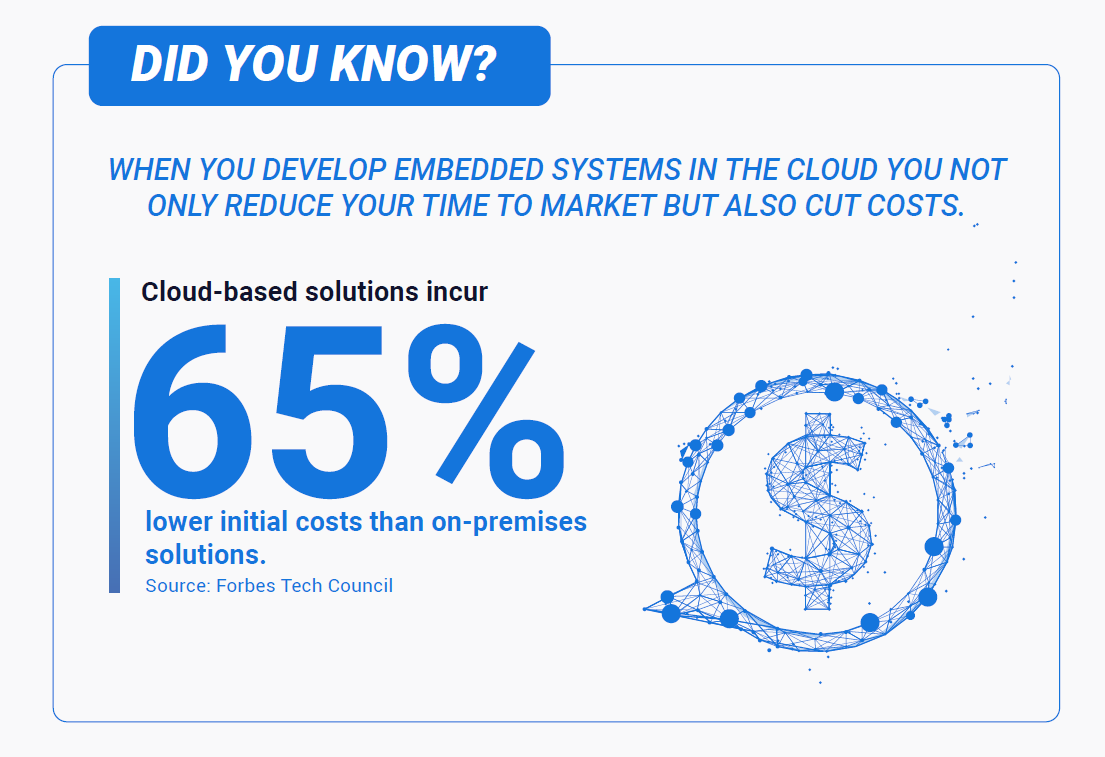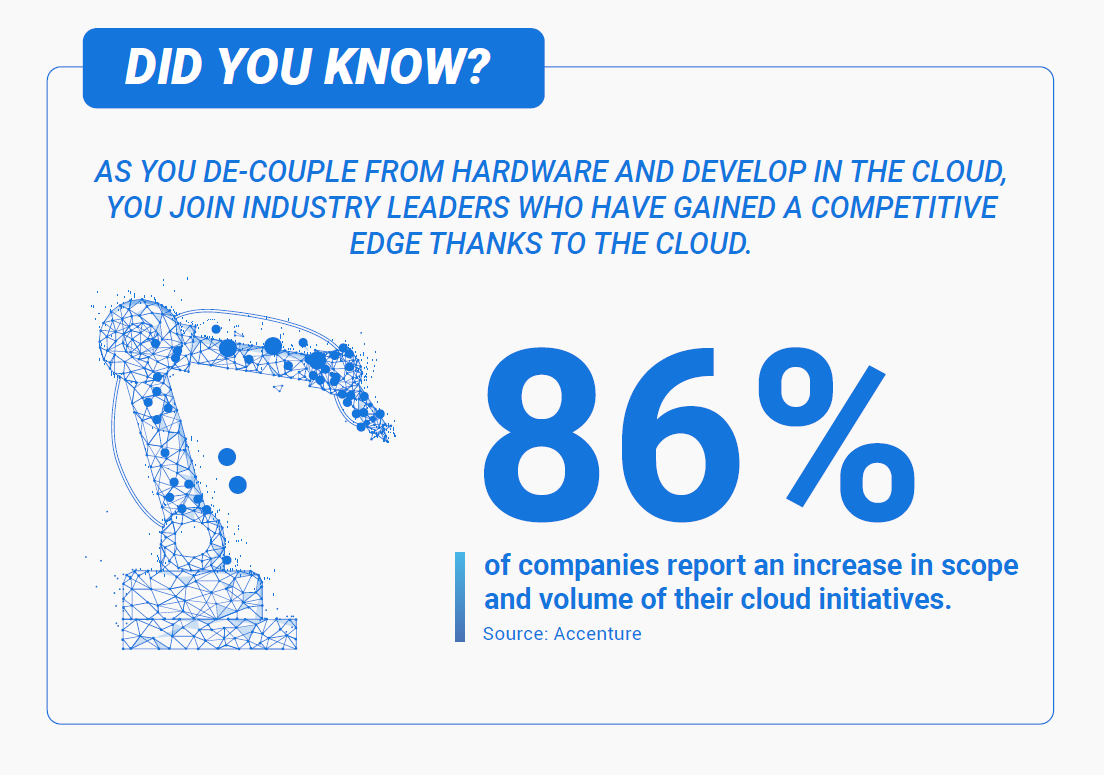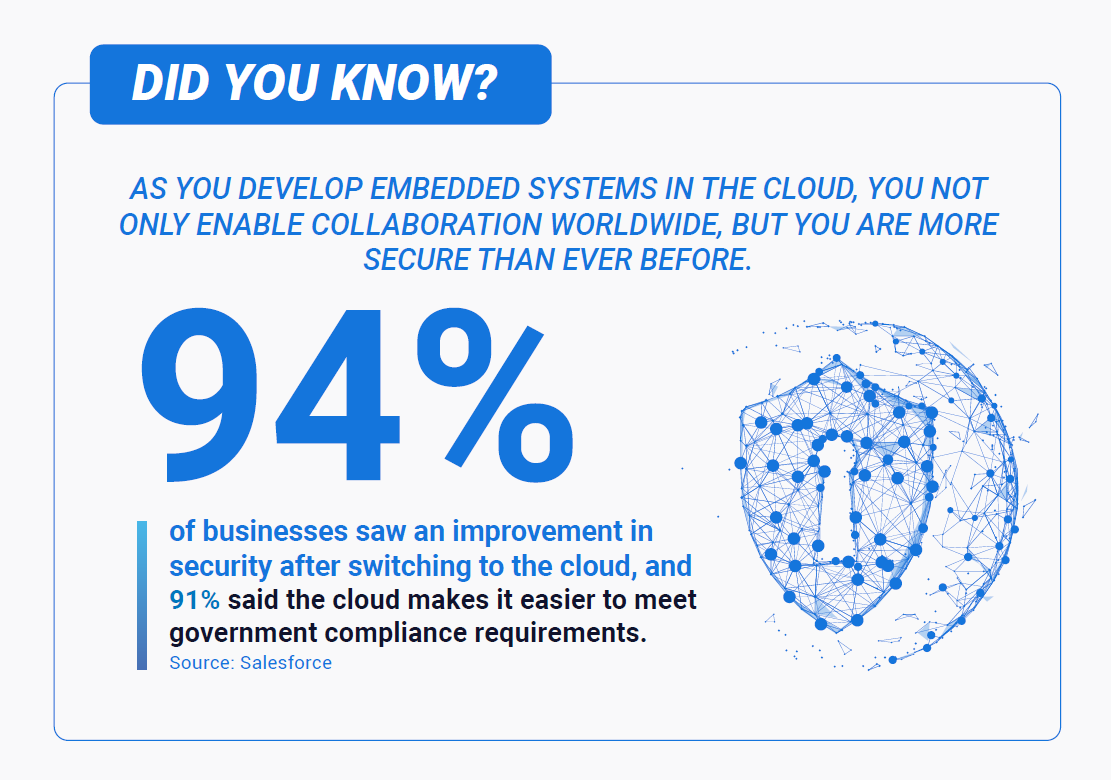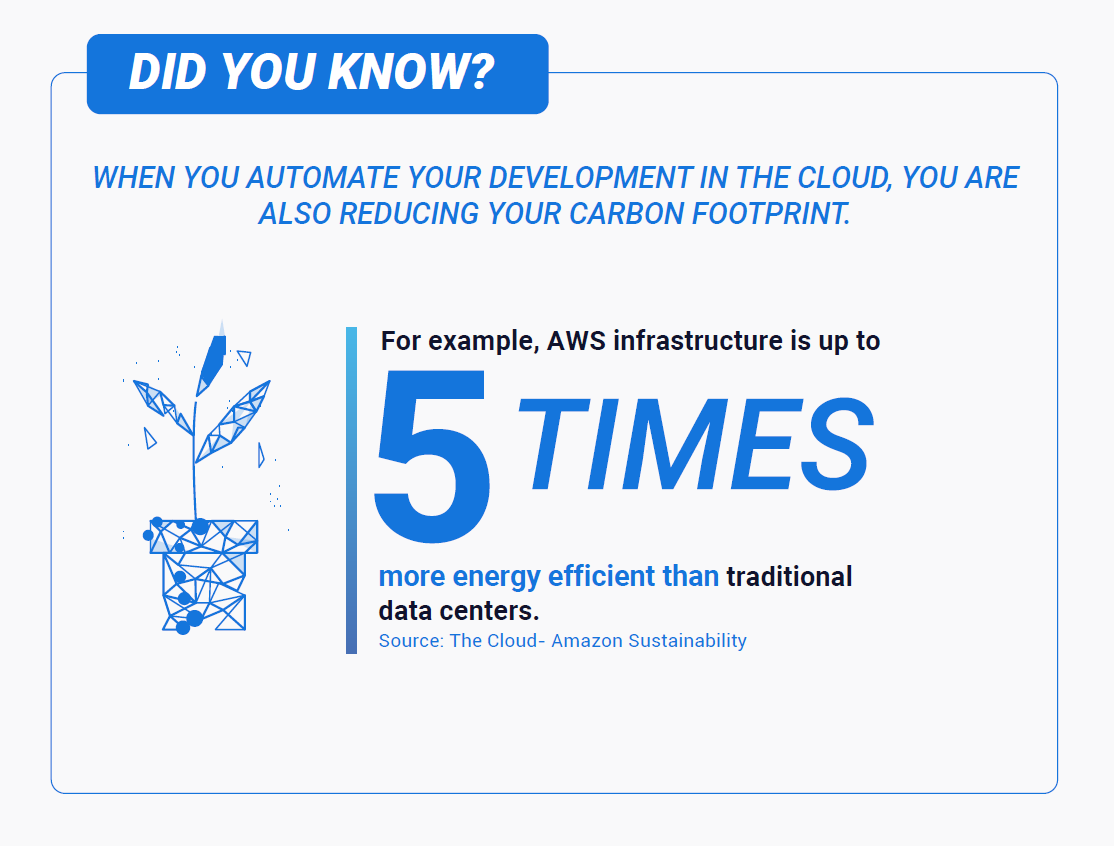Embedded Development in the Cloud: How BlackBerry QNX Accelerate Helps You Stay Ahead of the Curve

Reduced Costs and Improved Efficiency

With QNX Accelerate, customers can decouple from their hardware dependence and launch cloud targets with binary parity (i.e., no emulation) for development and testing activities. They can also save on embedded development capital costs and pay only for what they use. Developers are launching QNX cloud targets to perform development and testing at scale, going beyond the limited physical hardware they would have available in a traditional development environment.
Furthermore, QNX Accelerate simplifies support, dynamically scaling up and down as developers tackle new projects or wind down older ones. Development can also “shift left,” creating embedded-compatible workflows and reducing developer downtime by task automation via CI/CD (continuous integration/continuous development) pipelines.
This new paradigm of operational efficiency and responsiveness with QNX Accelerate allows organizations greater flexibility.
Improved Competitive Advantage

Accenture issued a report recently revealing that 86% of companies continue to increase the scope and volume of their cloud initiatives. This escalating trend is powered by a myriad of factors — all which can be distilled into one fundamental truth: Increased competitive advantage. Nearly half (45%) of companies that have fully achieved their expected outcomes are heavily reliant on third-party managed services. By outsourcing components of development infrastructure to external experts, companies can focus more on their core values and products.
Available through AWS, QNX Accelerate enables developers to leverage managed services that simplify the experience of using QNX Neutrino Real-Time Operating System and QNX OS for Safety in the cloud and integrating cloud methods into existing or new workflows. With this managed infrastructure, user-friendly interface, command lines tools, and other resources, embedded developers can easily start using QNX Accelerate at an individual developer level or incorporate it into CI/CD pipelines.
Additionally, QNX Accelerate helps reduce hardware dependence as it is used with embedded-compatible cloud targets, allowing developers to get near-instant feedback necessary to bring quality products to market more quickly. The ability to reduce an organization’s dependence on embedded hardware availability means organizations can stay focused on managing their project goals in a rapidly evolving market.
Better Security, Streamlined Compliance
QNX cloud-based products implement layered security features to ensure peace of mind when using the QNX cloud target. For example, the QNX cloud target uses a TCP (Transmission Control Protocol) stack that supports secure communication with strict access control. QNX RTOS also has many built-in cybersecurity technologies and safety certifications that allow development teams to build and deliver highly secure embedded products. As such, embedded developers can engage in more collaborative work both internally and externally, with distributed teams across the globe and across partners and vendors, all in a secure manner. Customized QNX® OS or QNX® OS for Safety cloud images can be securely shared so users can connect via secure key pair authentication or have multiple secure connections to a single cloud target. Not only does QNX Accelerate implement security features, but the AWS-hosted cloud environment also employs proprietary security capabilities.

Moving to the cloud does not mean compromising on security. Moreover, the cloud can streamline the process of adhering to government compliance requirements. Data protection laws such as GDPR (General Data Protection Regulation) or CCPA (California Consumer Privacy Act) necessitate stringent data management. The cloud can provide built-in mechanisms for compliance, reducing stress and resource drain.
Reduced Carbon Footprint
In the era of heightened awareness about climate change, businesses are being judged on their environmental footprint as well as their financial performance. The adoption of cloud-based solutions for embedded system development can play a pivotal role in reducing an organization’s carbon emissions. It’s one of the factors helping BlackBerry to achieve and maintain carbon-neutral status.

Another good example is AWS, which implemented a carbon-friendly policy by using a power mix that is 90% sustainably sourced and five times more efficient than typical on-premises corporate data centers. Because QNX Accelerate runs on AWS, moving to QNX Accelerate automatically helps companies lower their carbon footprint. As cloud companies like AWS have sustainability mandates and a large efficiency of scale, this low-carbon advantage is something that will always outpace an individual company’s efforts.
Embracing the Future
The transition to the cloud signifies a strategic shift that allows businesses to harness the power of affordable, flexible, secure, and sustainable infrastructure for embedded system development. By embracing QNX Accelerate, organizations can reduce costs and gain a competitive advantage while doing so with security requirements and environmental goals in mind. As the future unfolds, the cloud and QNX Accelerate can deliver compelling advantages as key drivers of the transformation of embedded software.

Related Reading
- BlackBerry QNX SDP 8.0 - A Breakthrough in Performance and Scalability for Embedded Systems and SDVs
- How BlackBerry QNX Is Building Automotive’s Software-Defined Future
- The Importance of Safety Within Software-Defined Vehicles
- Securing Next-Generation Medical Devices with BlackBerry Embedded Software
- Enabling the Next Generation of Automotive Software Functions
